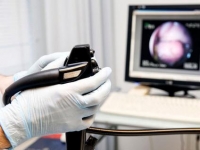Prevention of infectious diseases: how to protect yourself and your family
 Many of the diseases that cause viruses, fungi or bacteria that have entered our bodies can be simply avoided. For example, intestinal infections most often affect people due to non-compliance with basic hygiene rules. It is more complicated with airborne microorganisms: nobody is insured against flu or ORVI. But, knowing and observing uncomplicated disease prevention measures, one can minimize the risk of infection.
Many of the diseases that cause viruses, fungi or bacteria that have entered our bodies can be simply avoided. For example, intestinal infections most often affect people due to non-compliance with basic hygiene rules. It is more complicated with airborne microorganisms: nobody is insured against flu or ORVI. But, knowing and observing uncomplicated disease prevention measures, one can minimize the risk of infection.
What diseases belong to infectious
Diseases that cause infectious bacteria to enter the body are dealt with by infectiology. An infectious disease itself is the body’s response to an alien microorganism or virus entering it. Infectious diseases can be divided into 2 large groups: when a bacterium or a virus enters the body from the human environment (exogenous infection) and when the bacterial microflora inside the body begins to thrive, provoking a disease (endogenous infection).
Infection can be transmitted from person to person or from animal to person. Infections of the respiratory tract are transmitted through the air from a sick person or through close contact with him. Intestinal diseases are also called diseases of dirty hands: in most cases, violation of the rules of hygiene leads to the disease. A number of infections can only be transmitted through sexual contact, a number through close contact with an infected person, animal or surface (fungal infections), some diseases through blood transfusions. But most often, according to statistics, people get sick because of non-observance of the rules of hygiene, neglect of their own health and the health of children.
Signs of infectious diseases
The main symptoms that occur in an infectious disease are caused by intoxication of the body. This is weakness, nausea, dizziness and headache, a sharp increase in body temperature, pain in the joints and muscles. When a respiratory tract infection is observed cough, runny nose, nasal congestion, sore throat. With intestinal infections – vomiting, abdominal pain, diarrhea (diarrhea). Also often appear rash on the skin.
Any infectious disease will first manifest itself with general symptoms: it is body temperature from 37 degrees and higher (especially acute conditions can cause temperatures above 38 degrees), headache, weakness, nausea, dizziness. And only then do symptoms appear that indicate the localization of the infection in a particular organ.
How to avoid infectious diseases
Sometimes basic personal hygiene may not be enough. For example, in epidemics of influenza, when the disease is rapidly spreading through the air. In such cases, you should be less in contact with people who have signs of infection: cough, runny nose, etc. It is necessary to limit yourself to visiting places of large concentrations of people. Banal advice often wash hands with soap and do not touch your face with hands, do not rub your eyes really works. In the winter, complex vitamin preparations, hardening, an active lifestyle, and sports will help strengthen the immune system.
Spend more time not only personal hygiene, but also the hygiene of the place of work, study, housing. Frequently do wet cleaning, in the period of massive incidence of acute respiratory viral infection and influenza, often air the air, it is also useful to disinfect it with special devices – quartz filters (quartz lamps).
Vaccination will also protect against flu; only you need to be vaccinated during the epidemic, but a month and a half before the planned mass incidence. Also, only vaccination can protect against a number of infections: such as measles, tetanus, diphtheria, epidparotitis, etc. How to know about the vaccination plan, you can or cannot be vaccinated, how to determine the quality of the vaccine, etc. tell the attending physician, pediatrician or family doctor. Do not hesitate to ask the specialist a question and be healthy!



